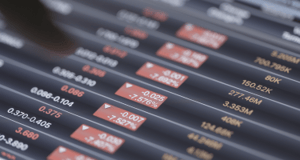

Economic Outlook: stagflation threatens
Economic Research
Supply bottlenecks, geopolitical turmoil and rampant inflation are leading to the threat of stagflation
Pandemic lurking as war dominates inflation rise
Economic disruptions caused by the war in Ukraine and zero-Covid shutdowns in major cities and ports in China, have generated a new set of adverse shocks for the global economy. Inflation is surging past records, squeezing real incomes and dimming the outlook for consumer spending. This, together with accelerated monetary tightening, is inevitably putting pressure on economic growth in 2022 and 2023.
We forecast global GDP to slow to 3.1% this year and 3.0% in 2023. Compared to our April forecast, this means a cumulative decrease of 0.7% for 2022 and 0.4% for 2023.
Despite supply chain constraints, trade costs, and price increases for commodities and energy, we still expect inflation to decrease again over the coming 18 months, although not as fast as we envisaged earlier this year. Returning inflation to normal levels will take more time, and this process is fraught with much uncertainty, especially concerning the length of time that prices will remain high.

Growth slides further
Lower global growth, together with an aggravation of the international supply chain bottlenecks triggered by the war in Ukraine and the Chinese zero-Covid policy, will eat into world trade growth. We expect trade growth to continue to slow, decelerating to around 4% per year in 2022 and in 2023. For 2022, this means a growth reduction of 1-2% compared to our January forecast.
Downside risks - stagflation looms
The major downside risk to our outlook is predominantly geopolitical. It may materialise if the Ukraine war intensifies, if Russia cuts off gas supply to Europe, or both. In such a scenario, the global economy would essentially experience another major shock. This would include soaring oil and gas prices, increased inflation, deterioration in financial market sentiment, and a hit to confidence. Central banks would strongly tighten their monetary policies. The outcome would be low or no GDP growth, accompanied by high inflation and recession for advanced economies. Global growth could slow to 1.3% in 2023, 1.7 percentage points below our baseline.
Very high oil and gas prices to moderate slightly
Oil and gas demand is likely to face some downward pressure with the economic slowdown and higher prices. This implies oil and gas prices are likely to soften in the coming 18 months, down from the current levels of USD 110-USD 120 per barrel for Brent and USD 133 per megawatt hour for Dutch TTF Natural Gas (the European benchmark for market-traded gas).
However, volatility is set to remain high. The EU intention to quickly divert from Russian gas, and Russia’s apparent willingness to accelerate this process by reducing gas supplies, will disrupt markets and create further uncertainty.
Commodity price rises calm down after shock
The rise of the commodity prices has softened considerably in late Q2 of 2022 due to the slowdown of global economic activity that has reduced demand for metals, including from China. Looking ahead metals prices are likely to be 10-15% higher than in 2021, followed by a slight downward trend in 2023. This implies they calm after the early 2022 shock.
Food prices were already on the rise before the war in Ukraine, reflecting poor crop outcomes and more expensive energy. The impact of the war on food prices will only gradually dissipate as production increases in other countries, including Argentina, Brazil and United States. The upshot is that prices in 2022 will be significantly higher with relief coming only in 2023.
USA: Interest rates rise as Federal Reserve fights inflation
Under the pressure of rising interest rates, fiscal consolidation and high inflation, we forecast US GDP growth to slow to 2.3% in 2022 and to 1.3% in 2023. We expect the economy to remain resilient this year, underpinned by the tight labour market. Economic activity will continue to slow as the Federal Reserve aggressively increases borrowing costs in order to combat high inflation.
We expect more interest rate hikes in H2 of 2022 in order to increase price stability, ending the year at 3.75% to 4.0%. While the risk of a recession in 2023 has increased, we still anticipate a soft landing, as inflation gets contained and the outlook stabilises, supporting ongoing private consumption.
Eurozone: two-speed recovery between services and manufacturing
We expect Eurozone GDP to grow 2.9% in 2022 and 2.5% in 2023. Services spending will rebound over the coming months as tourism and hospitality activity normalise. However, in the manufacturing sector problems are mounting. New orders are falling, and delivery times remain high as lockdowns in China impact the transport of key production inputs. The two-speed recovery between services and the industrial sector means that industrial economies like Germany are likely to underperform compared to more services-oriented economies.
We forecast inflation to decrease in H2 of 2022 (to an average of 6.5%). Given a drop in energy and food prices, a much lower inflation rate of 1.5% is expected for 2023. However, this inflation figure rests on the assumption that the war in Ukraine will end or temporarily pause in 2022, and that there will be no oil and gas boycotts. A protracted war and the end of Russian gas supply could result in an inflation rate close to 3% in 2023.
UK: one of the worst performing advanced economies
We forecast UK economic growth at 3.6% in 2022, followed by 1.3% in 2023, one of the worst performing advanced economies. Inflation has accelerated to a 40-year peak. The pressure on British households is high, as prices rise and pandemic-related fiscal support from the government decreases. Real household incomes are expected to decline by 2.2% in 2022, the largest decrease since records began in 1955. As a result, the consumer sector is about to enter a recession in H2 of 2022. Net exports are expected to gradually improve into 2023, but tensions between the UK and the EU over the Northern Ireland Protocol put this recovery at risk.
Emerging markets: rates increase in response to higher inflation
We expect GDP growth in EMEs as a whole to decrease from 6.9% in 2021 to 3.6% in 2022, followed by a 4.1% expansion in 2023. The events in Ukraine come on top of other issues, such as supply chain bottlenecks and slower vaccination rates compared to advanced economies. Additionally, fiscal support in EMEs has been withdrawn already, while central banks in many major emerging markets have already increased policy rates in response to higher inflation.
China: slowdown in previously strong economic expansion
After growing 8.1%, China´s economic expansion will slow down to a projected 4.0% this year, followed by 5.3% in 2023. The zero-Covid policy has severely disrupted supply-chains and domestic demand and, as the policy continues, the impact of restrictions on consumption is likely to linger longer. China’s real estate market is experiencing a significant downturn, leading to decreasing investment as developers default and price expectations fall.
Download the Atradius Economic Outlook here

